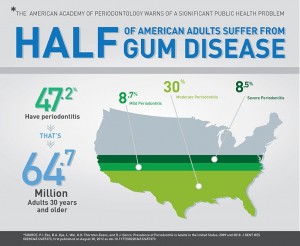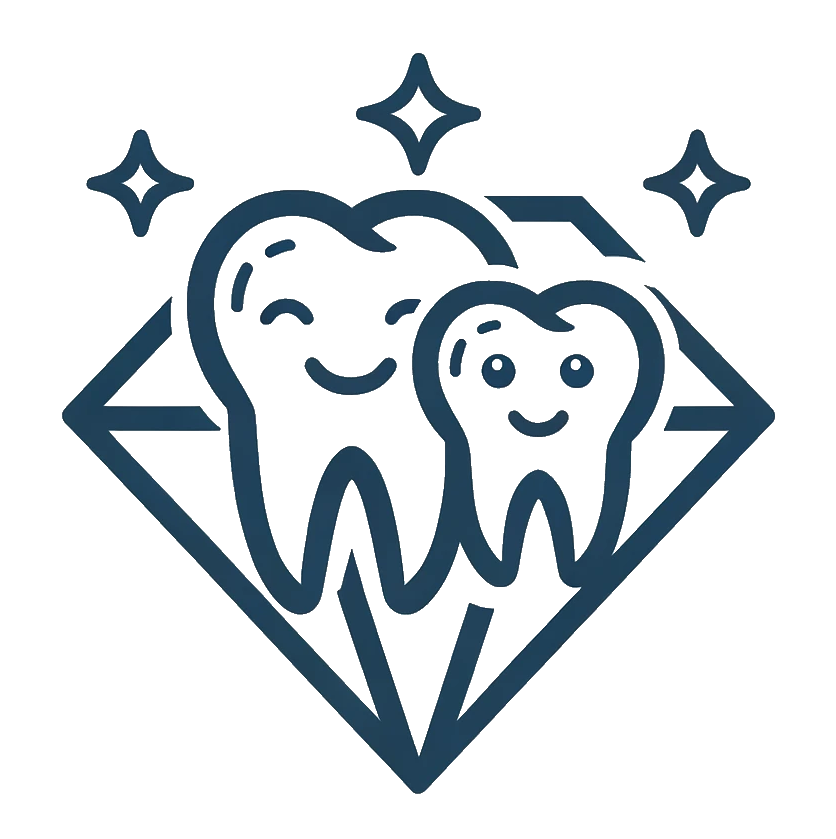 Gum disease (also called periodontal disease) is an infection of the tissues surrounding and supporting the teeth. It is a major cause of tooth loss in adults. In fact, after age 35, about three out of four adults are affected by some form of gum disease.
Gum disease (also called periodontal disease) is an infection of the tissues surrounding and supporting the teeth. It is a major cause of tooth loss in adults. In fact, after age 35, about three out of four adults are affected by some form of gum disease.
Gum disease is caused by plaque, a sticky film of bacteria that constantly forms on the teeth. These bacteria create toxins that can damage the gums. In the early stage of gum disease, called gingivitis, the gums can become red, swollen and bleed easily. At this stage, the disease is still reversible and can usually be eliminated by daily brushing and flossing.

Because gum disease is usually painless, however, you may not know you have it. In the more advanced stages of gum disease, called periodontitis, the gums and bone that support the teeth can become seriously damaged. The teeth can become loose, fall out or have to be removed by a dentist.
Signs of gum disease
If you notice any of the following signs of gum disease, see your dentist immediately:
- gums that bleed when you brush your teeth
- red, swollen or tender gums
- gums that have pulled away from the teeth
- bad breath that doesn’t go away
- pus between your teeth and gums
- loose teeth
- a change in the way your teeth fit together when you bite
- a change in the fit of partial dentures
Preventing gum disease
The good news is that you can help prevent gum disease by taking good care of your teeth every day and having regular dental checkups. Here’s how to keep your teeth and gums healthy:
- Brush your teeth well twice a day.
This removes the film of bacteria from the teeth. Be sure to use a soft-bristled toothbrush that is in good condition. Toothpastes and mouth rinses containing fluoride strengthen the teeth and help prevent decay. Choose products that bear the American Dental Association Seal of Acceptance, a symbol of a product’s safety and effectiveness. The ADA reviews all advertising claims for any product bearing the Seal. The Seal on a product is an assurance for consumers and dentists against misleading or untrue statements concerning a product and its use, safety and effectiveness. - Clean between your teeth every day.
Cleaning between your teeth with floss or interdental cleaners removes bacteria and food particles from between the teeth, where a toothbrush can’t reach. Early gum disease can often be reversed by daily brushing and flossing. If you use interdental cleaners, ask your dentist how to use them properly, to avoid injuring your gums. - Eat a balanced diet.
Choose a variety of foods from the basic food groups, such as breads, cereals and other grain products; fruits; vegetables; meat, poultry and fish; and dairy products, such as milk, cheese and yogurt. Limit between-meal snacks. - Visit your dentist regularly.
It is important to have regular dental checkups, and professional cleaning is essential to prevent periodontal diseases.
Treating gum disease
The good news is that early gum disease is very treatable by your dentist. There are several modality of treatment can be prescribed by Dr. Lee and Salem. With these gum treatments and regular gum maintenance every 3-4 months, you can keep your gum healthy.
- Thorough gum and soft-tissue exam.
- Disease education and prevention.
- Oral hygiene instructions.
- Scaling and root planning with anesthesia.
Deep gum cleaning may be prescribed. This procedure will decrease the bacteria and its toxin by-products from the deep gum pockets to prevent further bone loss.
- Re-evaluation for further gum treatments.
- Gum pocket reduction procedure.
If the gum pocketing is still large after the scaling and root planning, a surgical approach can be performed where by further decreasing gum pockets to be easily cleaned. - Non-surgical gum treatment with antibotic treatment with Arrestin and Periochip.
A non-surgical approach can be prescribed with early and moderate gum disease. After scaling and root planning, a series of localized specially formulated antibotics can be delivered. - Grafting procedures.
If bone loss exists or esthetics are a concern, soft-tissue and bone grafting can be performed. - Home maintenance with antibotic rinse and electric brush aids.
Cleaning between your teeth with floss or interdental cleaners removes bacteria and food particles from between the teeth, where a toothbrush can’t reach. Ask your dentist how to use them properly, to avoid injuring your gums.
